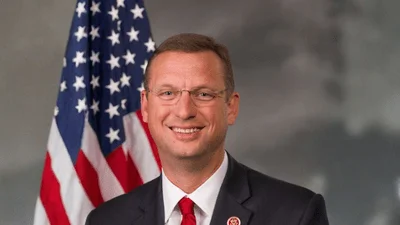Thank you, Rachel. Let me start by thanking the Secretary’s Office of Global Women’s Issues and the White House Gender Policy Council for hosting this corporate crossroads event.
We are indeed at a “crossroad” when it comes to the climate crisis. We see the devastating impacts of a warmer world, including the disproportionately higher risks imposed on women and girls. We know the stakes, and we know the road we must take. The science is clear.
We have to limit the rise of our global temperature to 1.5 degrees Celsius to avoid the worst impacts of the climate crisis. That means cutting emissions by at least 45 percent this decade, and ultimately reaching net-zero emissions by 2050.
We will continue to face obstacles as we pursue this path, but we have no other choice. The time is now and we need “all hands on deck,” including and especially women. I’m excited to hear today about how you, as leaders in the private sector, are leveraging the gender-climate nexus to harness the potential of women to lead our fight against the climate crisis.
The Biden-Harris Administration is committed to empowering women in this fight. In the first-ever U.S. National Strategy on Gender Equity and Equality, we included a section on climate that, among other things, recognizes the outsized impact of the climate crisis on women and girls. It clearly states that women and girls must play important leadership roles in advancing climate solutions at all levels of government, the private sector, and beyond.
Women on the Frontlines of Climate Impacts
As my friend (and Rachel’s colleague) Jen Klein, Executive Director of the White House Gender Policy Council, has said, “climate change is not gender neutral.”
And USAID Administrator Samantha Power put it even more bluntly, saying, “climate change is sexist.”
Statistics show that women and girls are, on average, significantly more likely than men to die from natural and climate disasters and to die at earlier ages. They are the first to feel the impacts of depleting natural resources resulting from climate change.
In many contexts, women and girls are also disproportionately harmed by food insecurity, water scarcity, and extreme weather and disasters – the frequency and intensity of which are increasing as a result of the climate crisis.
Climate impacts on agriculture and food systems present significant food security and livelihood challenges to millions of people – particularly women farmers – who, despite accounting for half the agricultural workforce in developing countries, often lack the assets and resources to absorb and adapt to shocks.
Further, climate-related disasters hinder access to essential services, including sexual and reproductive health care.
These challenges and stressors, in turn, are linked to increased rates of gender-based violence.
Women on the Frontlines of Climate Solutions
The United States recognizes the impact on women and girls, but we also know that women and girls are on the frontlines of climate solutions. And we have to catalyze their potential to be leaders in tackling the climate crisis.
Women must be fully empowered to lead in government, the private sector, and civil society, as well as in their homes and communities.
When women are in leadership positions in government, we are likely to see better environmental outcomes. For example, a study of 130 countries found that countries with a higher number of women in parliament were more likely to ratify environmental treaties.
Another study showed countries with more women in parliament tended to protect land rights at higher rates.
Around the world, at the community level, countless women leaders are reducing waste, adopting sustainable agricultural practices, planting trees, and moving away from charcoal as a fuel source.
As I mentioned earlier, women make up at least half the agricultural labor force in developing countries. Imagine the potential we could harness by empowering women and supporting their sustainable agriculture practices. I believe some of our panelists are already doing just that!
Indeed, studies show that closing the gender gap in agriculture would generate significant gains for the sector and for society – increasing yields by up to 30 percent, and total agricultural output in developing countries.
Further, forestry and agricultural projects are more successful when women are involved in planning and implementation. We know from experience that when women are involved in land and forest management, we often see better governance and fewer disputes.
The U.S. government wants to do more to tap into this immense potential. And I’m pleased to note that in addition to taking a whole-of-government approach to implementing the U.S, National Gender Strategy, the United States is dedicating at least $14 million of the Gender Equity and Equality Action Fund for investments in gender-responsive climate programming.
This includes activities that advance women’s leadership in climate action, increase women’s economic participation in green industries, and build women and girls’ resilience to climate shocks and stressors.
Conclusion
I have barely scratched the surface on the gender-climate nexus today – but let me conclude by saying that ultimately, the climate crisis is an enormous opportunity to transform economies while also empowering women and girls.
We are excited to explore opportunities to work with the private sector in this effort. My team and I look forward to today’s discussion.
Thank you.
Original source can be found here.









